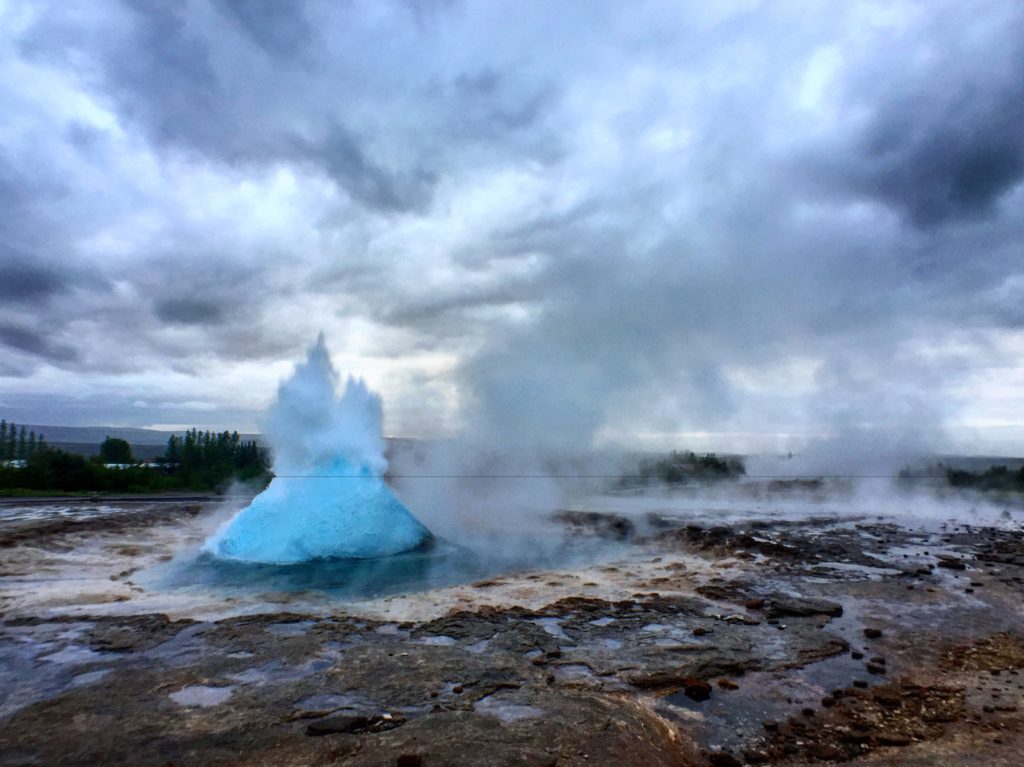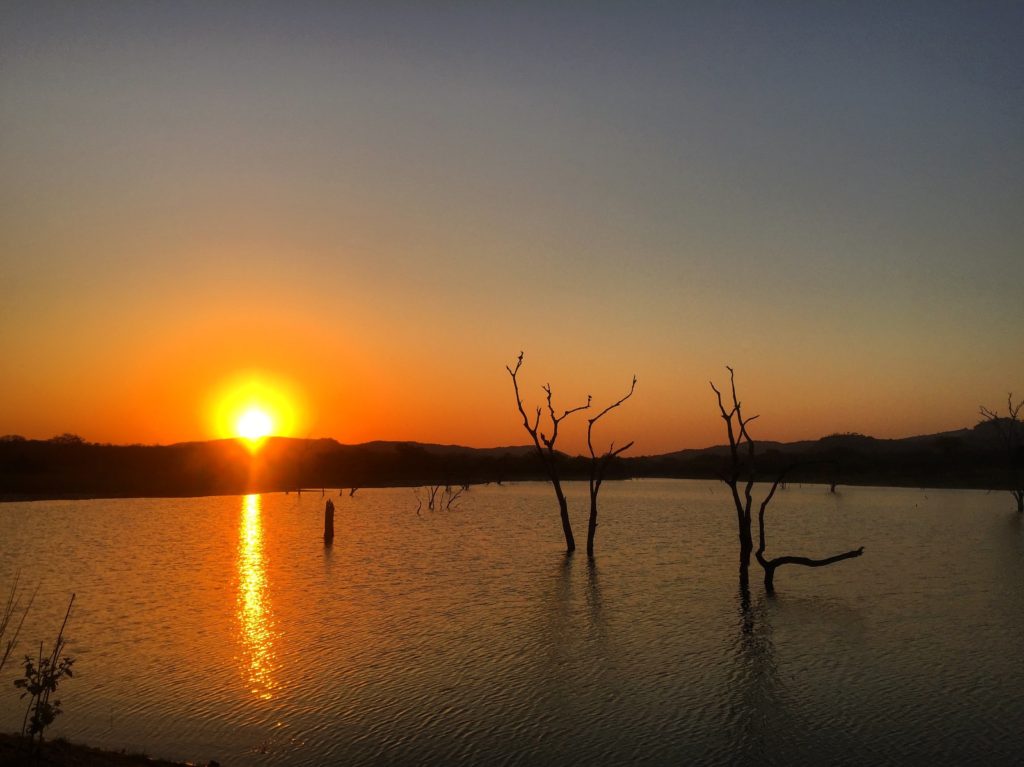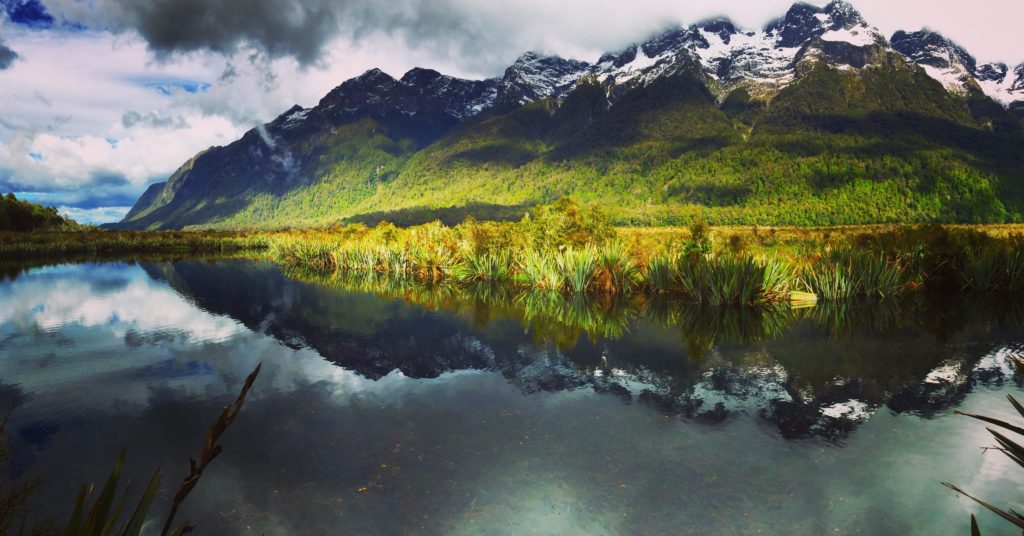Hannes pulled over as soon as we turned off Route 1 and deflated the tires on our Land Cruiser to a precise fourteen pounds per square inch. With that we were ready to traverse the F Roads which criss-cross the Highlands of Iceland. Our destination — a massive volcanic caldera named Askja.
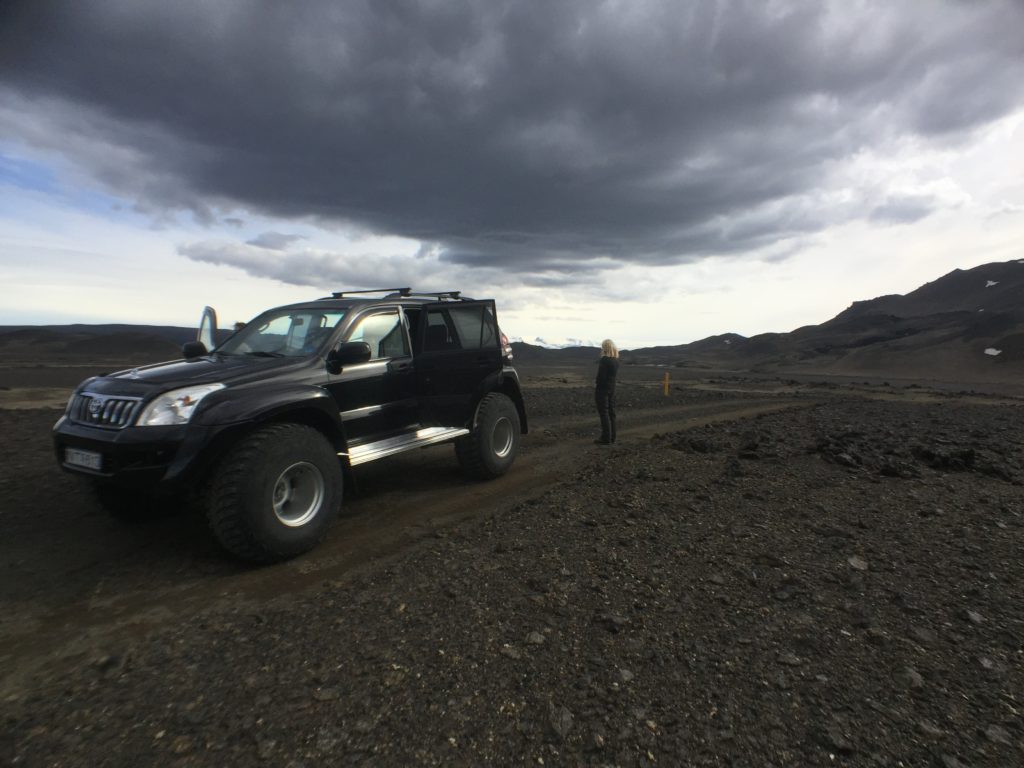
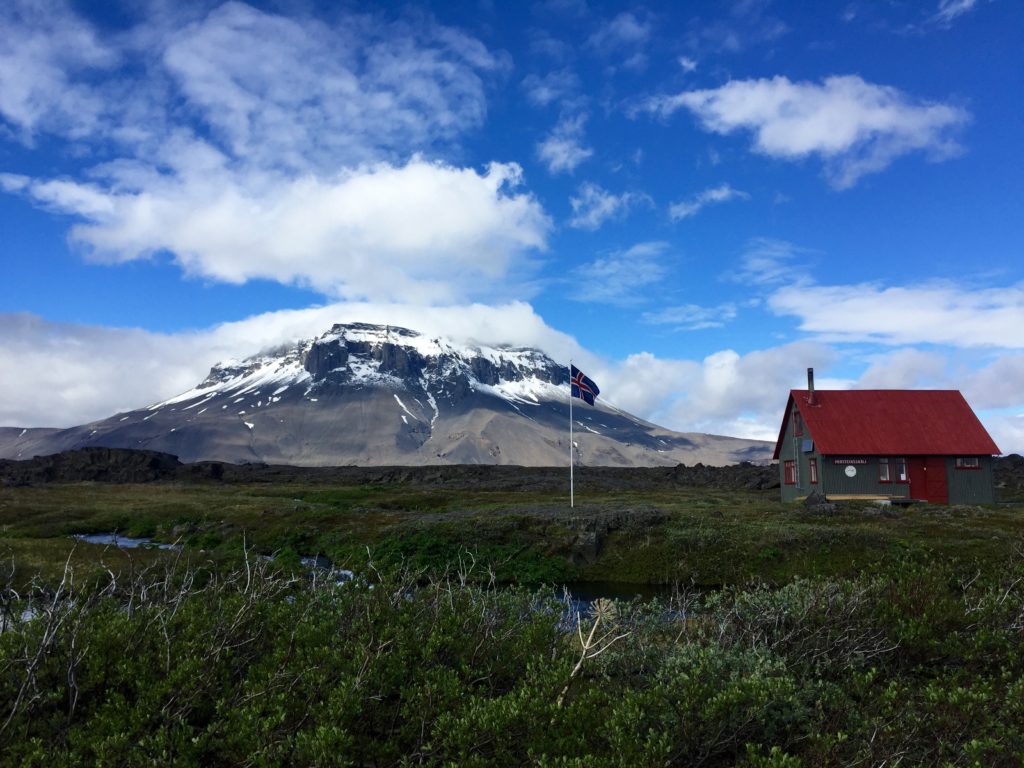
FJALLID
The F in “F Roads” actually stands for Fjallið, “mountain” in Icelandic. It also means unless you have a 4×4, forget it. And even then, today’s trip would not be for the faint-hearted. Very few vehicles could manage our itinerary. Luckily we were in a specially modified large SUV; fancy suspension, thirty-six inch tires, custom chassis, the whole deal.
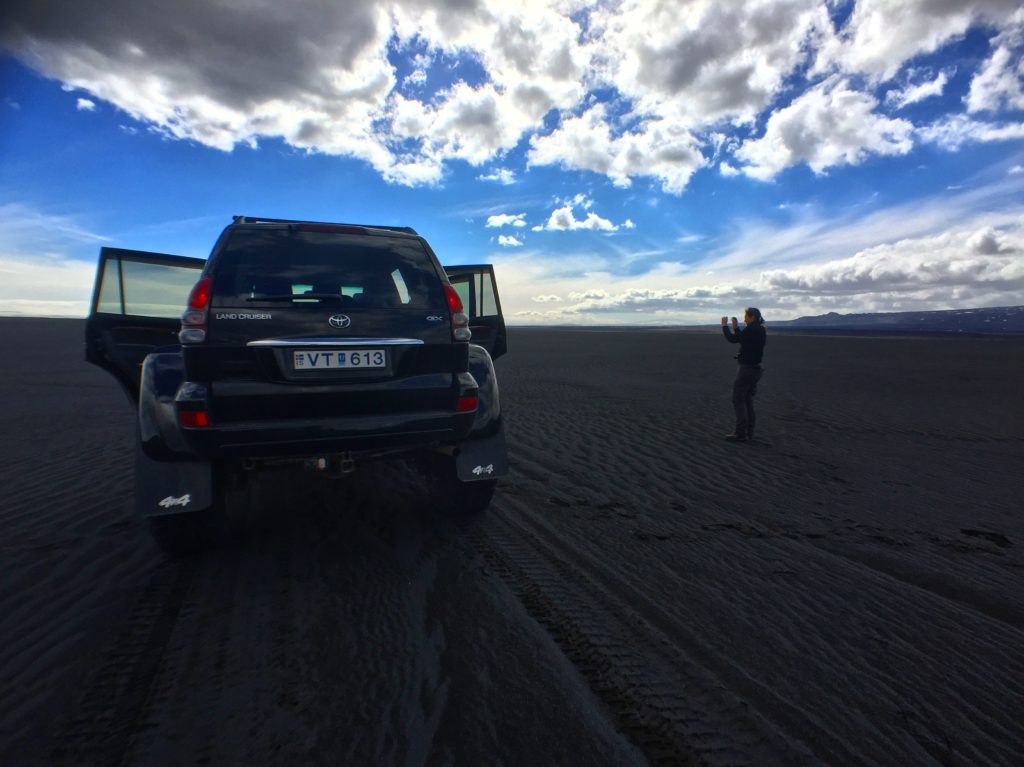
With the deflated tires we could zoom across rocks, gravel and rutted tracks like a fine road. And the high clearance meant we could ford rivers — six times in total.
Catch up on my middle of the night road trip through Iceland’s most popular sights
VOLCANOES
Iceland spans two tectonic plates and is home to about 130 volcanoes, 30 of which are considered active. Remember the Eyjafjallajökull volcano? The eruption and ensuing ash cloud which cancelled 107,000 flights back in 2010? Icelanders call that tongue twister E15.
The most recent eruption of Askja happened in 1961 and wasn’t nearly as disruptive as E15. But the last truly massive explosion of March 29th, 1875? It was a doozy, to put it mildly.
The impact — a blanket of ash so thick it killed livestock and ruined lives in Iceland’s East Fjords. People left the area and emigrated to North America because of Askja’s devastating effects.
The violent explosion left behind Iceland’s deepest lake.
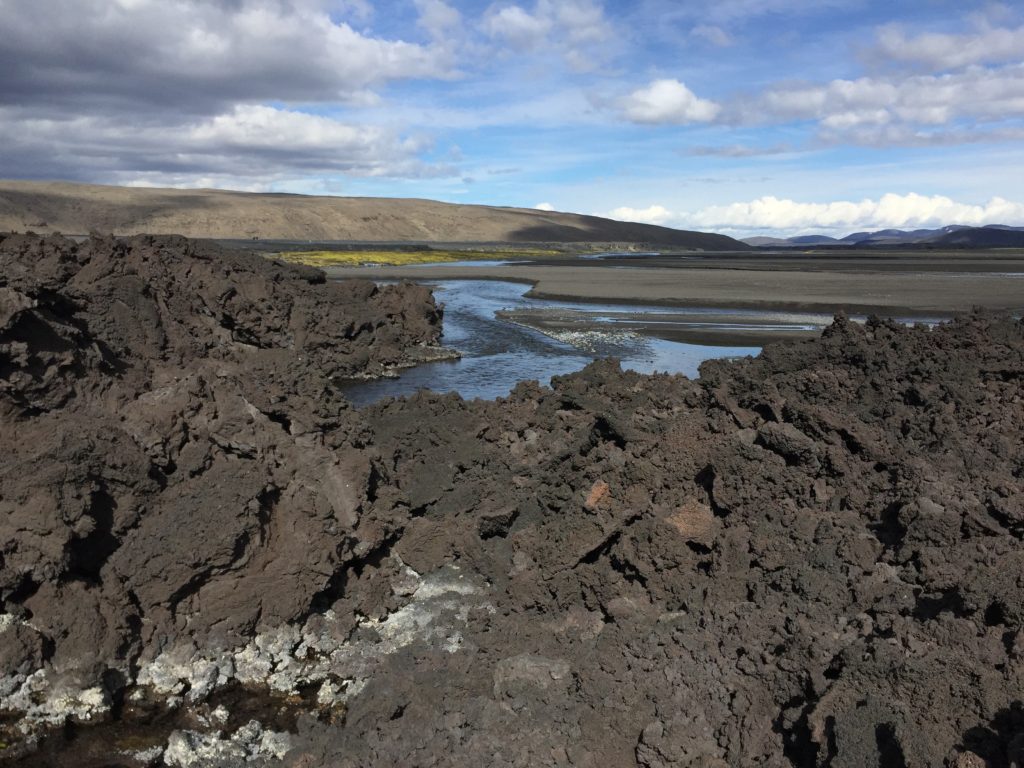
For obvious reasons, Iceland has a rather impressive volcanic monitoring system. A good number are overdue for a massive eruption and some of the biggies are beginning to rumble.
We joked all day about this being an exceedingly cool way to go out; blue skies, backcountry travel, good company, surrounded by nature.
DREKAGIL
As a former park ranger, Hannes spent months at a time stationed in remote Highland outposts educating visitors, researching the environment and assisting travelers who got in over their heads. An expert of the highest order, no doubt. I felt especially lucky to be along for the ride.
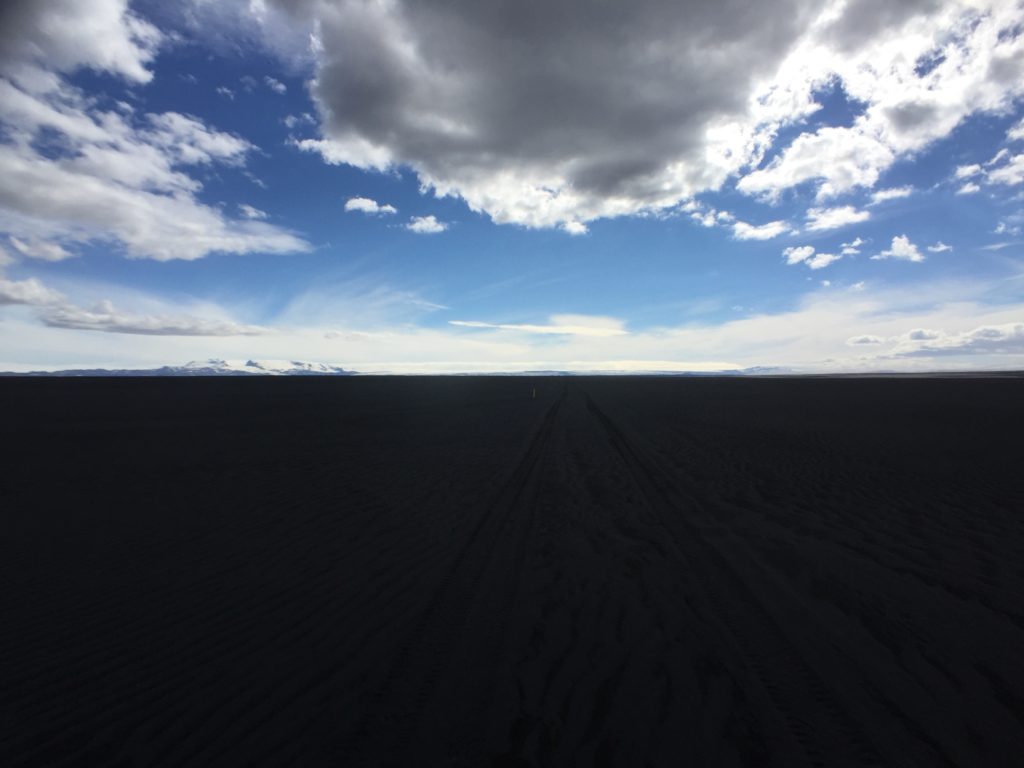
On the way to Askja Hannes took us on a little detour to one of his former stomping grounds, Dreki. American astronauts used this area of the Highlands as a research and training ground prior to their moon visits in the 60’s and 70’s.
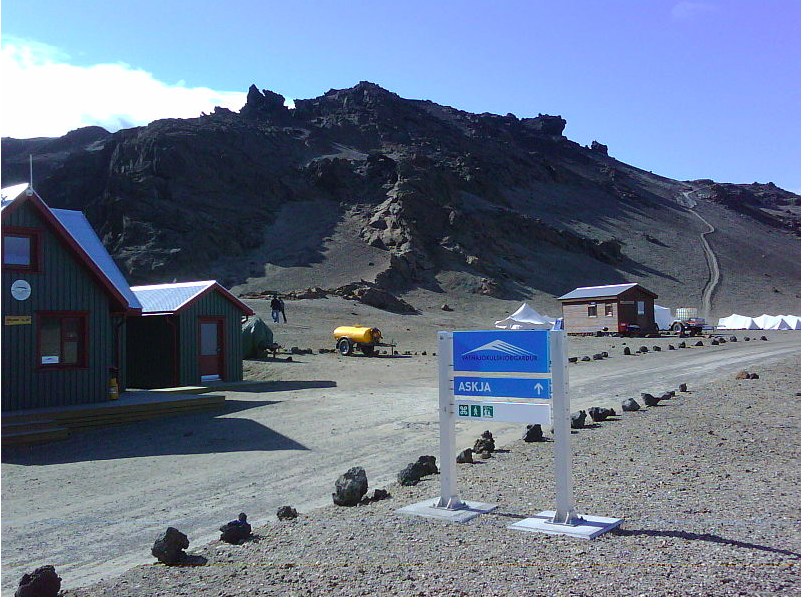
“I spent around ten days exploring the volcanically active regions of Iceland, a place so stark and barren I felt as if I were already on the moon. We were there in the summertime, and it seemed like the sun never set.”
Al Worden, Apollo 15 Astronaut
I made my way into Drekagil Canyon, criss-crossed a shallow stream and eyed a path over the rocky scree slopes which lined the canyon walls. Every step on the gravel path meant a little slip down the edge. A few misplaced steps meant bigger slips, several of which got my heart pumping pretty good.
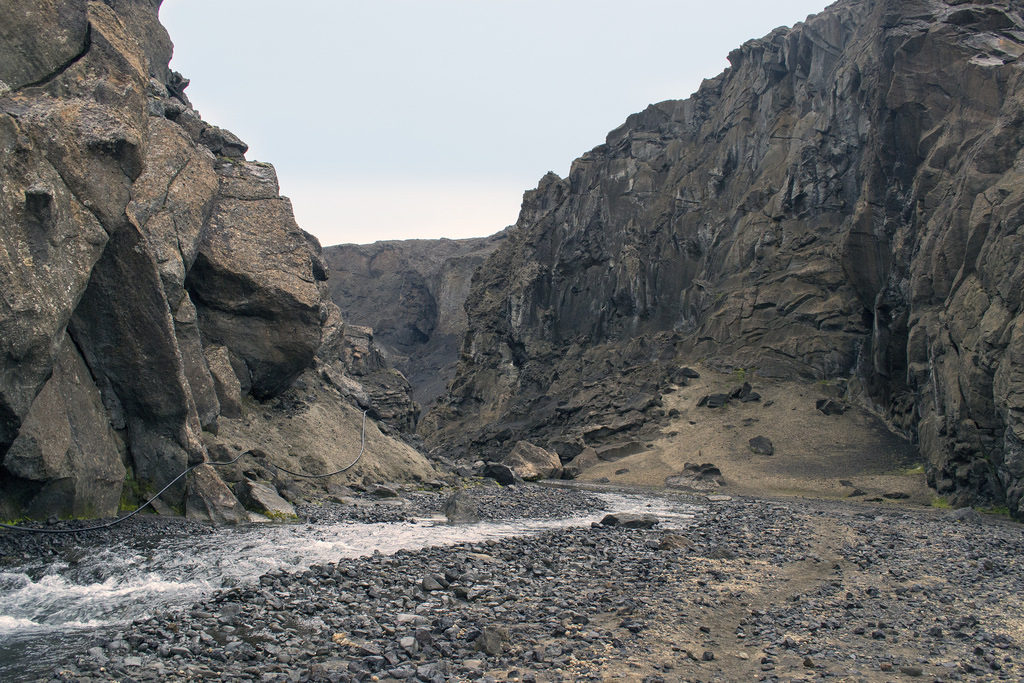
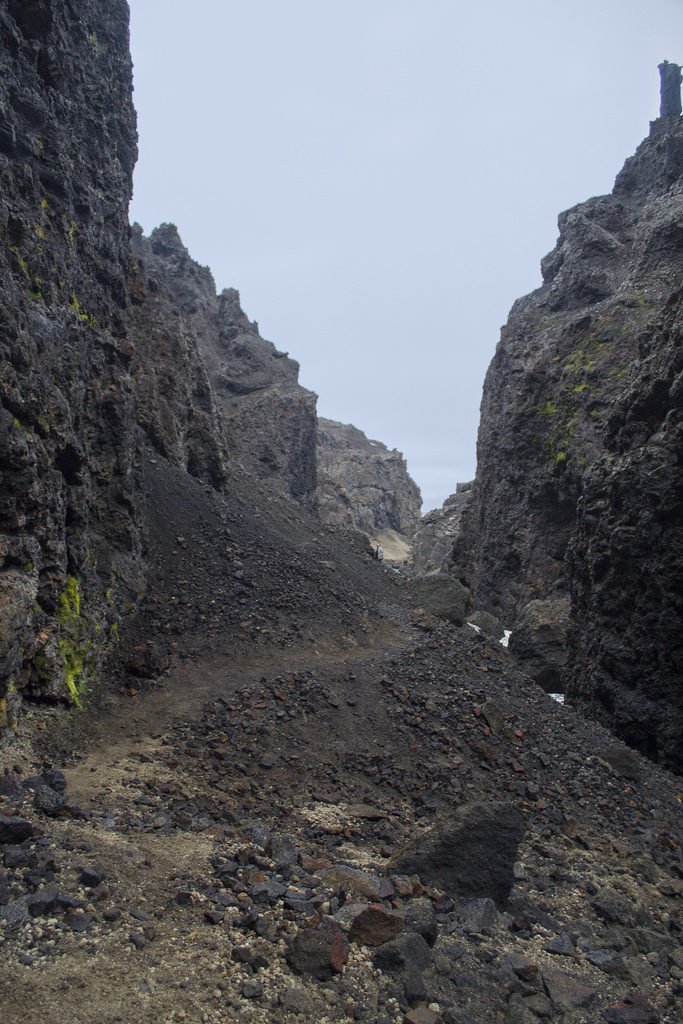
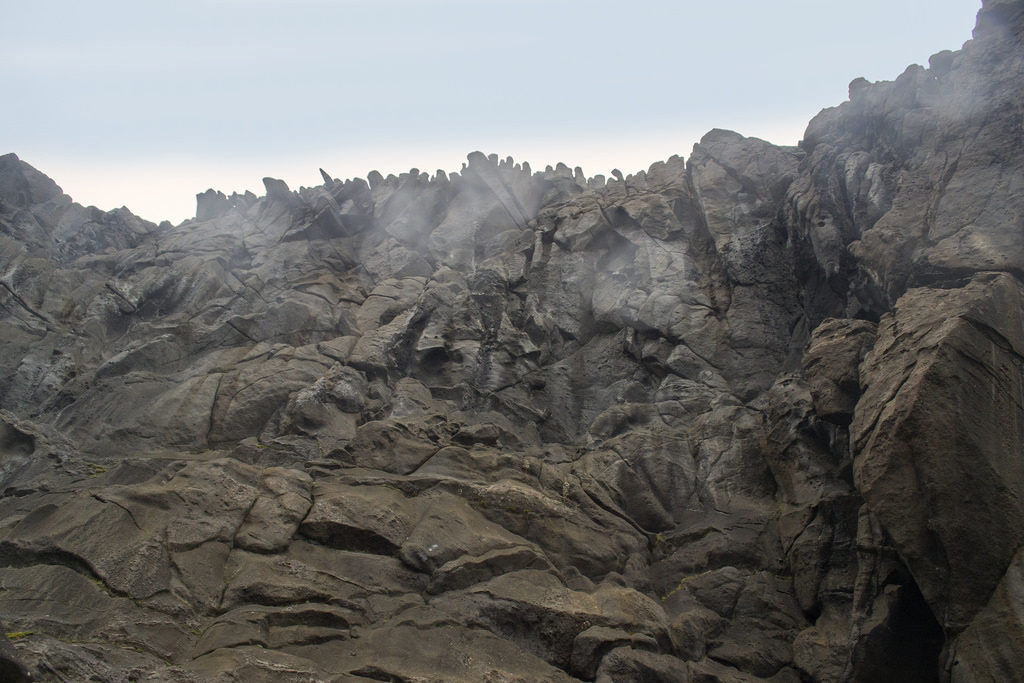
Like many of the better hikes in Iceland, there was an expected reward at the end of Drekagil — a waterfall.
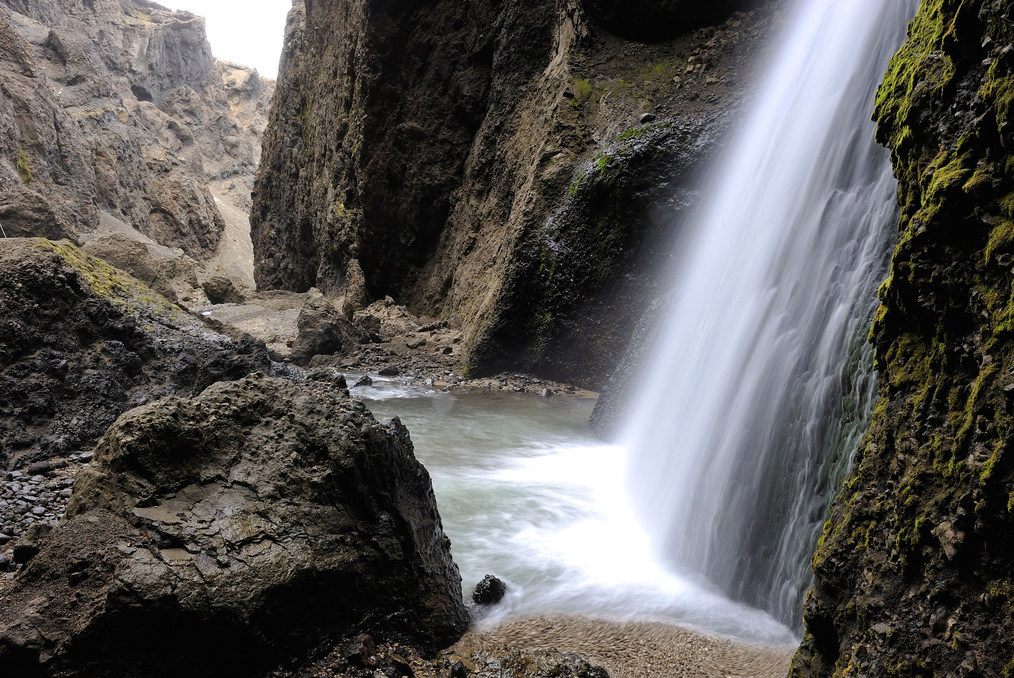
It certainly wasn’t the tallest waterfall. Nor the most beautiful. But it had the added bonus of being far from anything and anyone. The serene setting, deep in a canyon and hours from asphalt roads, is one Iceland’s best.
After Askja? The Trollaskagi Peninsula, one of Iceland’s hidden gems
ASKJA
Sixty-five miles after leaving the actual road Hannes pulled into what passes for a Highlands parking lot. Everyone bundled up in their outdoor best as we set out on foot through freshly fallen snow — Askja lay two and a half kilometers ahead.
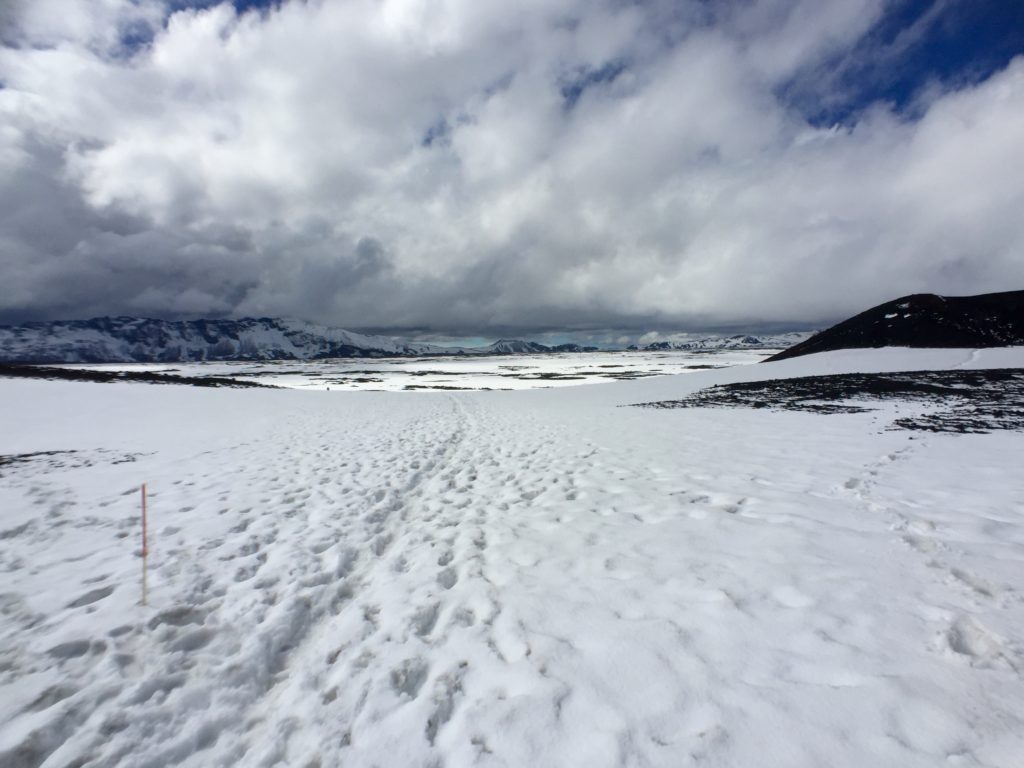
I was excited. Few things are more enjoyable than a long walk in the cold. The chilly air invigorates the body and makes me feel alive. Pair that with crunchy snow, puffy clouds and occasional glimpses of deep blue sky… what an awesome day to be out and about.
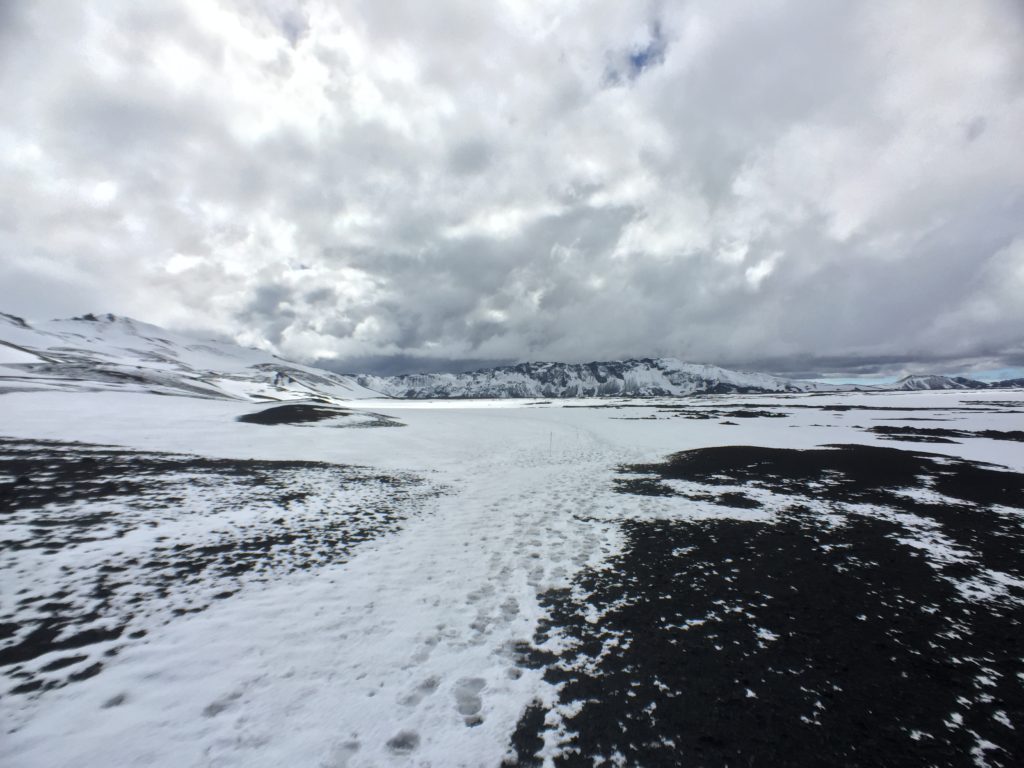

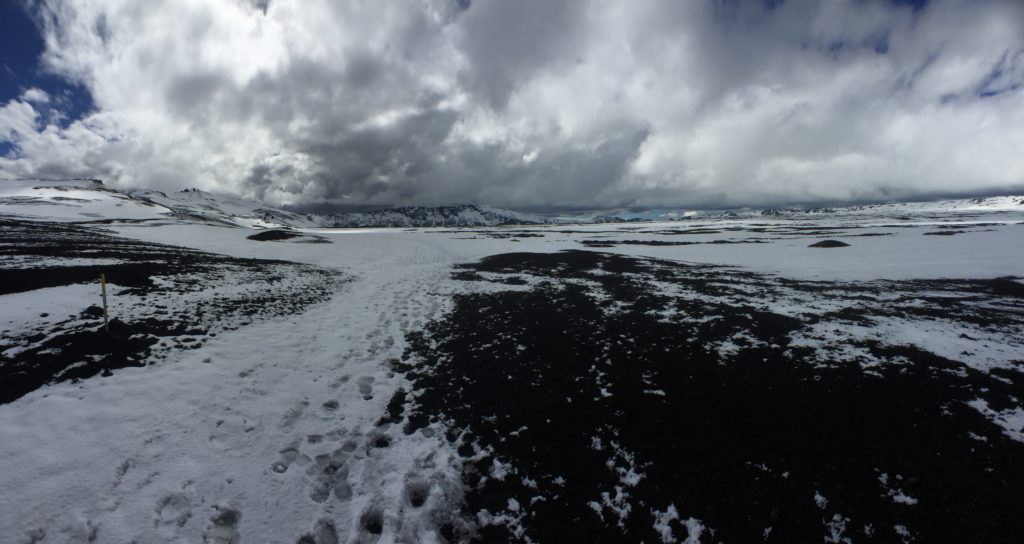
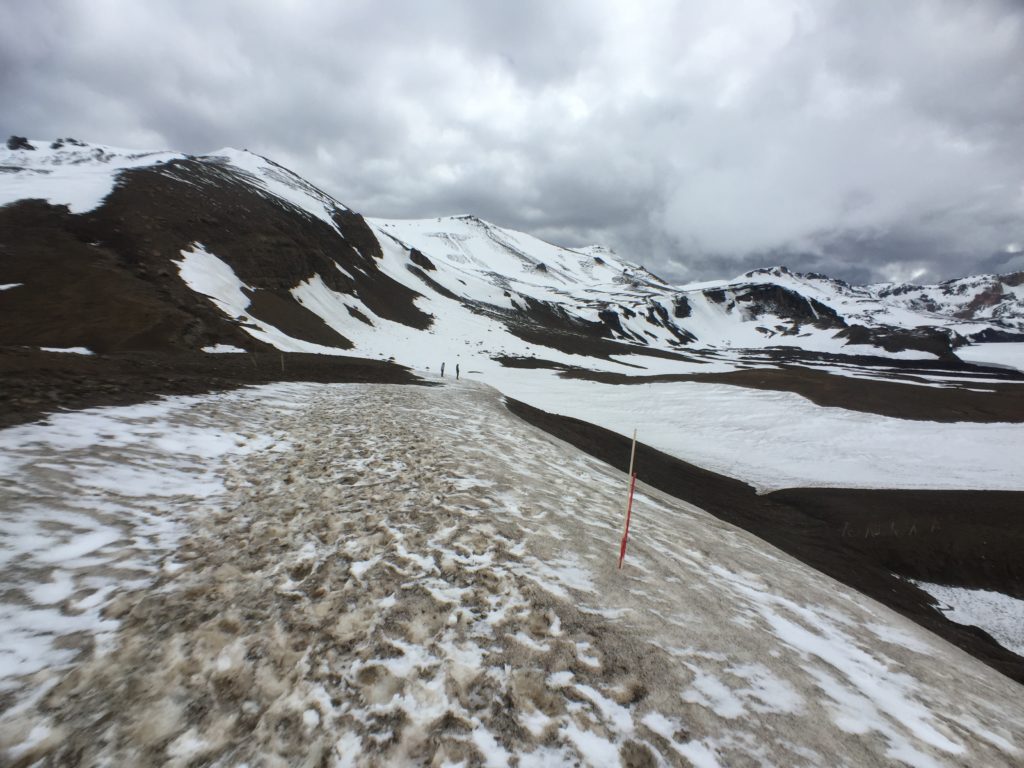
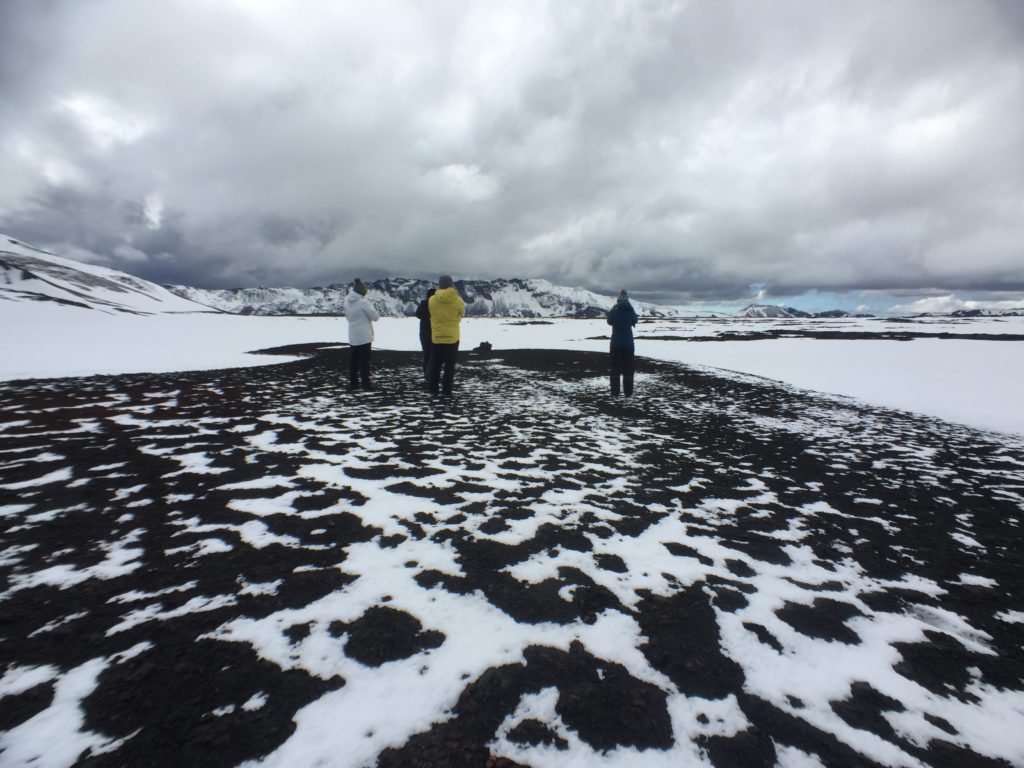
Forty minutes later two Swiss girls, a Dane and I crested a ridge and set eyes on the massive volcanic caldera.
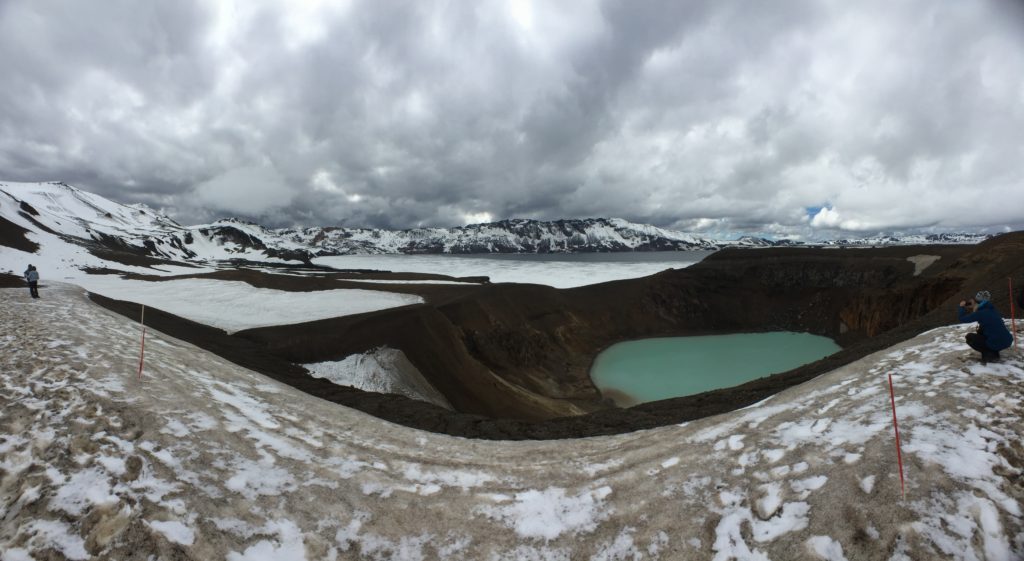

Spread out before us lay the water and ice filled Lake Askja. Tall mountain peaks framed the steep-sided crater. The sun peeked through a moody grey sky.
I stood carefully on the ridge, braced against the stiff breeze, Askja to my right, the Víti — “Hell” — explosion crater to my left. A sheet of ice nuzzled up along the shore of the former while mineral rich turquoise water filled the latter.

To say it was one of the most beautiful sights in a country absolutely overflowing with them, well, that’s no lie.
I was in awe.
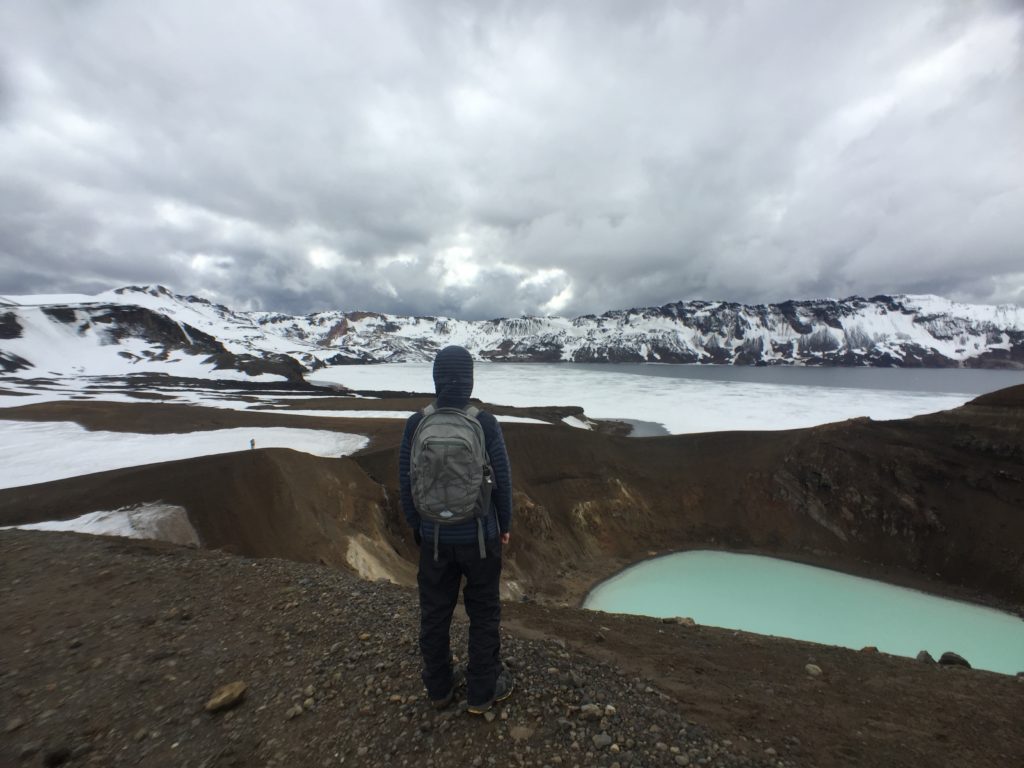
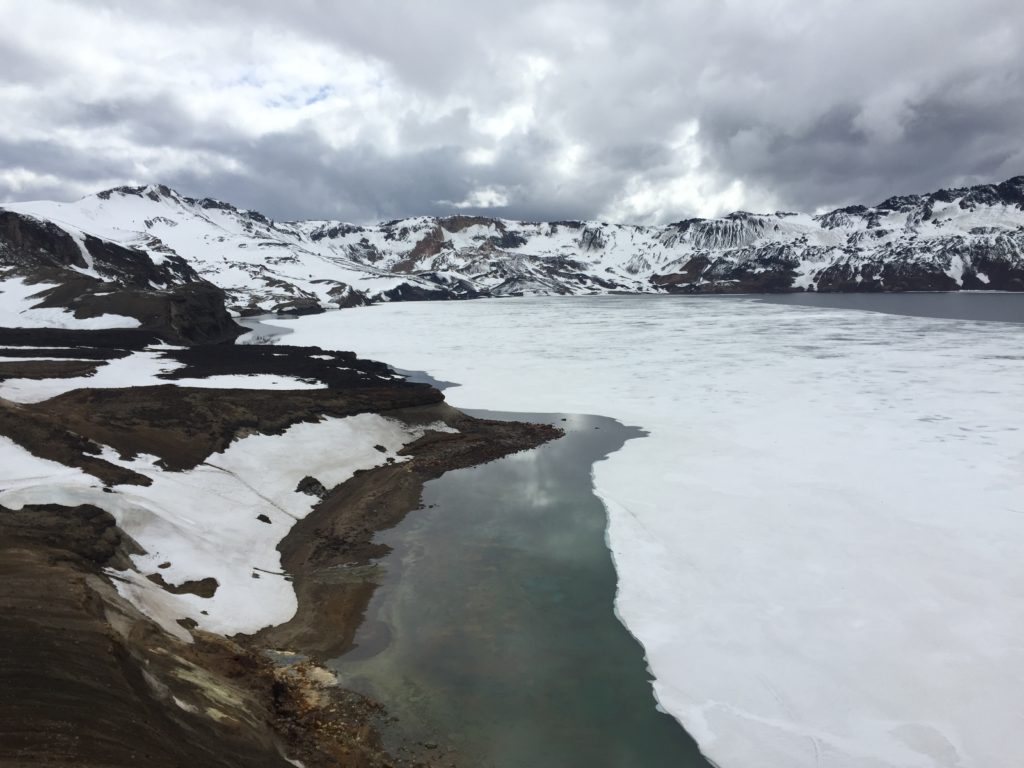
DO IT YOURSELF
Getting There/Getting Around
Just in case the entry didn’t make it clear — this trip cannot be undertaken in a normal vehicle. If you drive onto an F road with a standard rental car you risk destroying the vehicle, having it washed away in a river crossing or ripping up the underside on a large rock.
Rental firms explicitly ban non 4×4’s from driving on F roads. Do so and your insurance becomes invalid. You are on your own, so to speak. Even then, rental vehicles are not allowed on the road to Askja.
Eating & Sleeping
Most visitors in this neck of the woods sleep or camp in or around Lake Mývatn. Reykjahlíð is the small town on the lake and offers all the usual amenities.
The campground has a pretty lakefront location. Laundry services are a plus. As a couple with a few krona to spend, you could do worse than a private rental cabin in town. Check out the full spectrum of local accommodation options here.
As far as dining, how about a meal overlooking a cow stable and milking station?
Seeing the Sights
Askja and the Highlands
To see Askja or truly experience the Highlands, take a tour. I went with Geo Travel and highly recommend their services. At 34.900 ISK (US$348), the Askja Tour is not cheap. But everything ran smoothly and guiding was nothing short of outstanding. All told we were out for about 13 hours.
Most tour companies have designated meeting spots in Reykjahlíð. It’s a small place, so even if you’re making your way around via bus, tours are doable.
Myvatn Nature Baths
If you’re up this way, don’t miss the Myvatn Nature Baths. Less of a zoo than the Blue Lagoon, the geothermal baths are a relaxing end to a full day. Long opening hours. Entry varies between 4.200 and 4.700 ISK (US$42-47). Discounts typically offered during rainy weather as water temperatures cool by a few degrees.
